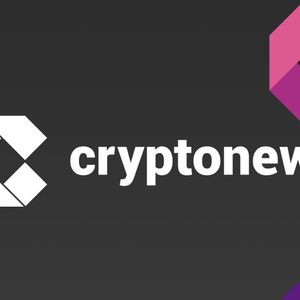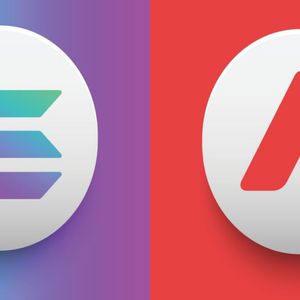

The Bitcoin Halving: What Is It? And Why Does It Matter?
Summary Approximately every four years, a 'bitcoin halving' occurs, cutting the rate at which new bitcoin is issued in half. These scheduled events enable bitcoin to be slowly distributed into the market while maintaining its scarcity. Halving events are hard-coded into Bitcoin’s source code and are critical to bitcoin’s value proposition as a transparent cryptoasset with a finite supply. The next bitcoin halving is expected to occur around April 20, 2024. At this time, the amount of bitcoin created with each block of transactions will fall to 3.125 from 6.25 bitcoin. By Jay Jacobs What is a Bitcoin halving? Bitcoin miners are compensated for proposing blocks and extending the blockchain with newly issued bitcoin, known as block rewards. But to ensure bitcoin's scarcity and maintain its codified 21 million supply cap, new issuance is designed to slowly decline through time and eventually fall to zero. The mechanism for achieving Bitcoin's disinflationary monetary policy is known as a bitcoin halving. Approximately every four years a "halving" occurs and new bitcoin issuance is cut in half. The next bitcoin halving is expected to occur around April 20, 2024. After this, the amount of bitcoin created with each new block will fall to 3.125 from 6.25, and daily issuance will fall to about 450 bitcoin from about 900. This process is scheduled to continue until the last bitcoin is mined around 2140. To help understand the significance of the halving event, it's important to first understand how bitcoin mining works. What is Bitcoin mining? Bitcoin mining is the process by which networks of specialized computers race to solve a cryptographic puzzle. The first miner to solve the puzzle earns the right to form the next block of transactions and is compensated with newly issued bitcoin. The solution to the puzzle is not found strategically, but through a process of brute force guessing. Therefore, each miner's probability of success depends on their proportional share of the network's computing power, also referred to as "hashrate" (See Figure 1). This dynamic incentivizes bitcoin miners to invest in new hashrate. And since blocks are cryptographically linked, reversing a bitcoin transaction requires that a malicious party gain a majority share of the network's hashrate, so the security of the Bitcoin network grows in tandem with the network's hashrate. (Learn more about the evolution of bitcoin's ecosystem .) Figure 1 What are the implications of a Bitcoin halving? The bitcoin halving slows the pace of supply increases at the expense of bitcoin miners, who face a 50% reduction in block rewards (See Figure 2). After the event, the Bitcoin network's hashrate may suffer a temporary decline in response to weakening miner economics, as older, less energy-efficient mining hardware may become unprofitable and removed from operation. Measuring the impact on miner profitability isn't as simple as measuring the first-order revenue hit, however. Bitcoin's mining algorithm dynamically adjusts its difficulty about every two weeks in response to changing hashrate conditions. If the network's hashrate falls, the difficulty of the cryptographic puzzle will be reduced and the expected bitcoin production per unit of hashrate will increase, and vice versa. Figure 2 Source: Bitcoin White Paper (2008) and CoinGecko, as of Dec 31, 2023. For illustrative purposes only. There is no guarantee that the current 21 million supply cap for outstanding bitcoin will not be changed. The (Short) History Of Bitcoin Halving Events Many crypto enthusiasts perceive the halving through a bullish lens as a reduced pace of bitcoin issuance could serve as a tailwind for price appreciation in a constant demand environment. Historically, bitcoin performance has been positive leading into and in the year of and immediately following halving events (Figure 3). Indeed, the price of bitcoin reached a record high of $73,150 on March 13, 2024 after rallying 160% in the prior six months. 1 That said, each subsequent halving has had a smaller impact on bitcoin's inflation schedule. With about 94% of all bitcoin already mined, future issuance represents a small fraction of the circulating supply, potentially reducing the comparison to historical halving events. Moreover, bitcoin has been around since only 2009, so a sample size of just three prior halvings makes it difficult to place confidence in the accuracy of this narrative. One thing we can say with confidence is that bitcoin is a volatile asset subject to large, short-term price swings. The halving presents a good opportunity to remind investors to take a measured approach that not only considers the potential upside that could come from investing in bitcoin, but also its volatility characteristics and risks. Beyond risk considerations, if you're an investor in bitcoin or a bitcoin ETF, you don't have to do anything to prepare for the halving. Figure 3 Source: Bloomberg Bitcoin Spot Price as of Dec. 31, 2023. All dollar values shown, and return calculations, are in USD terms. Years outlined in blue featured a bitcoin halving event. Past bitcoin halvings were on Nov. 28, 2012, July 9, 2016, and May 11, 2020. Past performance is not indicative of future results. Glossary: Bitcoin : Can refer to both the cryptoasset and the blockchain network. The protocol, Bitcoin, processes transactions and maintains the ledger via a distributed system of computers running Bitcoin software, known as nodes. The asset, bitcoin, is the native token on the Bitcoin network and the world's leading and most widely adopted cryptoasset 2 . It is mined, stored, and transferred on a peer-to-peer network via a public ledger, the blockchain. Blockchain : A distributed digital database that is shared amongst the "nodes" of a network of computers that enables consensus. As a database, a blockchain stores information maintaining a secure and decentralized record of transactions. The core innovation of blockchain technology is focused on the fidelity and security of a record of data while minimizing trust amongst participants. Block rewards : New bitcoin is created with each block and sent to compensate the miner that solved the block. The block reward started at 50 bitcoin when bitcoin was created in 2009. With the next halving, expected around April 20, 2024, the rewards will decline to 3.125 from 6.25. Bitcoin halving : Bitcoin "halving" events occur when the block reward for mining bitcoin transactions is cut in half. These events were written into Bitcoin's mining algorithm to counteract inflation and maintain scarcity. May 2020 was the most recent halving, when the block reward for a bitcoin "miner" went to 6.25 bitcoin. The next halving event is anticipated for April 2024 and will reduce the block reward to 3.125 bitcoin. Halvings occur every 210,000 blocks, or approximately every four years. Hashrate : The combined computational power across all miners securing the Bitcoin network. 1 Source: Bloomberg as of April 1, 2024. Past performance is not indicative of future results. 2 Source: CoinGecko, as of March 19, 2024. Bitcoin predominance is based on its market capitalization of $1.3T, which accounts for greater than 50% of the total market capitalization of all cryptoassets, excluding stablecoins. This information must be preceded or accompanied by a current prospectus . Investors should read it carefully before investing. Investing involves a high degree of risk, including possible loss of principal. An investment in the Trust is not suitable for all investors, may be deemed speculative and is not intended as a complete investment program. An investment in Shares should be considered only by persons who can bear the risk of total loss associated with an investment in the Trust. The iShares Bitcoin Trust is not an investment company registered under the Investment Company Act of 1940, and therefore is not subject to the same regulatory requirements as mutual funds or ETFs registered under the Investment Company Act of 1940. The Trust is not a commodity pool for purposes of the Commodity Exchange Act. Before making an investment decision, you should carefully consider the risk factors and other information included in the prospectus. Investing in digital assets, such as bitcoin, involves significant risks due to their extreme price volatility and the potential for loss, theft, or compromise of private keys. The value of the shares is closely tied to acceptance, industry developments, and governance changes, making them susceptible to market sentiment. Digital assets represent a new and rapidly evolving industry, and the value of the Shares depends on the acceptance of bitcoin. Changes in the governance of a digital asset network may not receive sufficient support from users and miners, which may negatively affect that digital asset network's ability to grow and respond to challenges Investing in the Trust comes with risks that could impact the Trust's share value, including large-scale sales by major investors, security threats like breaches and hacking, negative sentiment among speculators, and competition from central bank digital currencies and financial initiatives using blockchain technology. A disruption of the internet or a digital asset network, such as the Bitcoin network, would affect the ability to transfer digital assets, including bitcoin, and, consequently, would impact their value. There can be no assurance that security procedures designed to protect the Trust's assets will actually work as designed or prove to be successful in safeguarding the Trust's assets against all possible sources of theft, loss or damage. This material represents an assessment of the market environment as of the date indicated; is subject to change; and is not intended to be a forecast of future events or a guarantee of future results. This information should not be relied upon by the reader as research or investment advice regarding the funds or any issuer or security in particular. The strategies discussed are strictly for illustrative and educational purposes and are not a recommendation, offer or solicitation to buy or sell any securities or to adopt any investment strategy. There is no guarantee that any strategies discussed will be effective. The information presented does not take into consideration commissions, tax implications, or other transactions costs, which may significantly affect the economic consequences of a given strategy or investment decision. This material contains general information only and does not take into account an individual's financial circumstances. This information should not be relied upon as a primary basis for an investment decision. Rather, an assessment should be made as to whether the information is appropriate in individual circumstances and consideration should be given to talking to a financial professional before making an investment decision. Shares of the Trust are not deposits or other obligations of or guaranteed by BlackRock, Inc., and its affiliates, and are not insured by the Federal Deposit Insurance Corporation or any other governmental agency. The sponsor of the trust is iShares Delaware Trust Sponsor LLC (the "Sponsor"). BlackRock Investments, LLC ("BRIL"), assists in the promotion of the Trust. The Sponsor and BRIL are affiliates of BlackRock, Inc. © 2024 BlackRock, Inc or its affiliates. All Rights Reserved. BLACKROCK, iSHARES, iBONDS, LIFEPATH, ALADDIN and the iShares Core Graphic are trademarks of BlackRock, Inc. or its affiliates. All other trademarks are those of their respective owners. iCRMH0424U/S-3487710 This post originally appeared on the iShares Market Insights.













